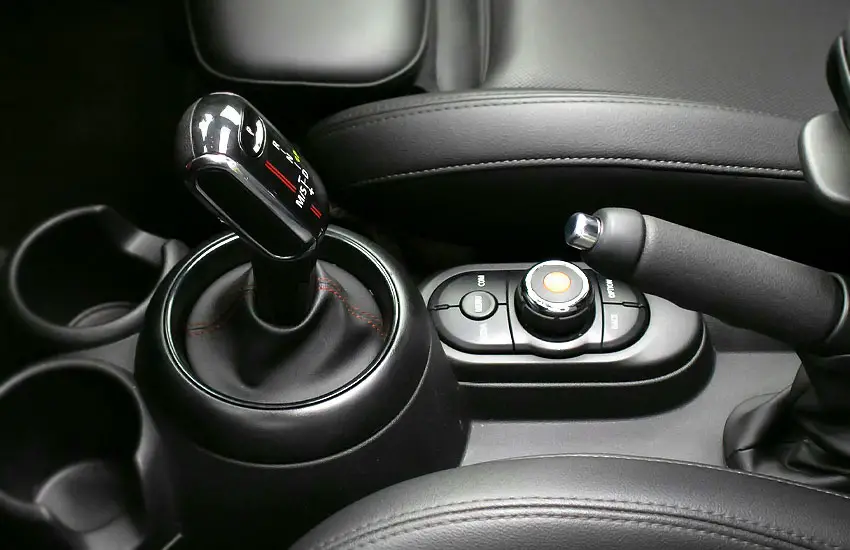As an Amazon Associate, I earn from qualifying purchases at no extra cost to you.
How to Test Transmission Control Module: Simple Steps!
You might have heard about the transmission control module (TCM) if your car isn't shifting gears right. It's a key part of your car’s transmission system. Testing the TCM can seem tricky, but it's important to figure out if it’s working correctly.
In this article, we'll show you how to test your TCM step by step. We'll keep it simple and clear, so you don't need to be a car expert to follow along. Ready to get started? Let's dive into checking your TCM to make sure everything is running smoothly!
How to Test Transmission Control Module: Step-by-Step Guide
The Transmission Control Module (TCM) is an important part of your car's transmission system. It controls how and when your transmission shifts gears. If you think your TCM might be having problems, here's a step-by-step guide on how to test it.
Tools You'll Need
- OBD-II scanner (for reading error codes)
- Multimeter (for checking electrical connections)
- Vehicle repair manual (for your car’s specific details)
Step 2: Locate the TCM
Finding the Transmission Control Module (TCM) is a key step in testing it. The TCM is an electronic component that controls the transmission’s shifting functions. To locate it, start by consulting your vehicle's repair manual. This manual will typically provide a diagram or description of where the TCM is positioned in your car.
The TCM can often be found near the transmission, which is the part of the engine that handles gear changes. Look around the transmission area carefully, as the TCM is usually mounted close to it.
In some vehicles, the TCM might be located under the dashboard on the driver's side. If this is the case, you may need to remove some panels or trim pieces to access it. Be cautious when removing these parts to avoid breaking any clips or fasteners.
Use a flashlight to help you see better in dark or tight spaces where the TCM might be hidden. If the TCM is not in these areas, it could be situated in the engine bay, close to the fuse box or near the engine itself.
Once you have located the TCM, make sure you have enough room to work on it. Sometimes, other components might need to be moved out of the way to gain better access.
Take your time to ensure that you can clearly see and reach the TCM without causing damage to surrounding parts.
Step 3: Check for Error Codes
Checking for error codes is an essential step in diagnosing potential issues with your Transmission Control Module (TCM). Begin by turning off your car to ensure safety while working.
Next, connect an OBD-II scanner to the OBD-II port in your vehicle. This port is typically located under the dashboard near the steering column. Plug the scanner into this port to establish a connection with your car's computer system.
Once connected, turn the ignition key to the “On” position, but do not start the engine. This will power up the car's electronics and allow the scanner to communicate with the car's computer.
Follow the scanner's instructions to read the error codes. These codes are specific to various components and can provide valuable information about any issues related to the TCM.
Carefully record the error codes that the scanner displays. These codes will help you understand what might be wrong with the TCM or other parts of the transmission system. After noting down the codes, you can clear them using the scanner's built-in function.
Clearing the codes can help you determine if the issue is persistent by checking if new codes appear after driving the car.
Step 4: Inspect Wiring and Connections
Inspecting the wiring and connections to the Transmission Control Module (TCM) is crucial for ensuring that the TCM is properly connected and functioning. Start by turning off the car and removing the key from the ignition to prevent any electrical issues or injuries.
Once the car is off, access the TCM. You might need to remove panels or other components to reach it. Be careful when handling these parts to avoid causing damage.
Begin by visually inspecting the wiring harness connected to the TCM. Look for any signs of damage, such as frayed wires, cuts, or burns. Ensure that all connectors are securely attached to the TCM.
Loose or disconnected wires can cause the TCM to malfunction. Additionally, check for any corrosion on the connectors and wires. Corrosion can disrupt electrical signals and lead to problems with the TCM.
Use a wire brush or contact cleaner to remove any corrosion you find. Make sure that all connections are clean and secure before reassembling any parts you removed.
Step 5: Test Electrical Signals
Testing the electrical signals of the Transmission Control Module (TCM) involves checking the power and ground connections to ensure they are functioning properly. Begin by turning off the car to avoid any potential electrical hazards. Set up your multimeter to measure voltage, as this tool will help you check the electrical signals.
Locate the power supply pins on the TCM using the wiring diagram from your vehicle's repair manual. Attach the multimeter probes to these pins and turn the ignition key to the "On" position without starting the engine.
Measure the voltage at these pins and compare the readings with the specifications provided in the repair manual. This will help you determine if the TCM is receiving the correct amount of power.
Next, test the grounding connections by checking for continuity between the ground pins on the TCM and the car's ground. This ensures that the TCM has a good ground connection. A proper ground is essential for the TCM to function correctly.
If the voltage or grounding readings are not within the specified ranges, there may be an issue with the TCM or its connections. Accurate testing of these electrical signals is crucial for diagnosing problems with the TCM.
Step 6: Check TCM Functionality
Checking the functionality of the Transmission Control Module (TCM) involves observing how the TCM manages the transmission while driving. Start by reconnecting the TCM if you had removed it for any inspections or repairs. Ensure that it is securely attached and all connectors are properly plugged in.
Turn on the engine and let it idle for a few minutes. This allows the TCM to start operating and adjust to normal conditions. Take the car for a test drive, shifting through different gears to observe how the transmission responds. Pay attention to how smoothly the transmission shifts from one gear to another.
If you notice any issues, such as rough or hard shifting, slipping between gears, or if the transmission fails to shift at all, it might indicate a problem with the TCM. Take note of any unusual behavior or symptoms. This information can help you or a professional mechanic diagnose and address the problem with the TCM more accurately.
Step 7: Advanced Testing (If Necessary)
If basic tests do not reveal the issue or if the TCM still seems to be malfunctioning, advanced testing might be required. Start by using an advanced diagnostic tool, which can perform more in-depth tests on the TCM. These tools can simulate various operating conditions to see how the TCM responds under different scenarios.
Follow the instructions provided with the diagnostic tool to run these advanced tests. The tool may offer options to test specific functions of the TCM that are not possible with a standard OBD-II scanner. Carefully analyze the results from these tests and compare them with the specifications provided in your vehicle's repair manual.
If the advanced tests still indicate problems with the TCM or if the results are inconclusive, it may be best to seek professional help. A qualified mechanic can use specialized equipment and expertise to further diagnose and repair the TCM. They can also advise if a replacement is necessary.
Step 8: Consult a Professional
- Seek Expert Help: If you're unable to diagnose the problem or if the TCM still appears faulty, consider consulting a professional mechanic.
- Consider Replacement: If the TCM is defective and cannot be repaired, replacing it might be necessary.
I hope this guide helps you understand how to test the transmission control module. By following these simple steps, you can make sure it’s working correctly. If you need more help or the problem persists, consider asking a mechanic for advice.

Questions in Your Mind
Is it Safe to Drive with a Faulty TCM?
Driving with a faulty TCM can cause transmission problems, such as erratic shifting or slipping gears. It's best to have it repaired or replaced to avoid further damage to your transmission.
Can a Faulty TCM Cause Poor Acceleration?
Yes, a faulty TCM can affect how your car accelerates. If the TCM isn’t working properly, it might not shift gears correctly, leading to poor acceleration.
Is it Expensive to Replace a TCM?
Replacing a TCM can be costly. Prices vary depending on your vehicle and whether you choose to go for a new or refurbished part. Labor costs for installation can also add to the expense.
Can I Test the TCM Myself?
Yes, you can test the TCM yourself using a scan tool and a multimeter. However, if you're unsure or uncomfortable with these procedures, consulting a professional mechanic is a good idea.
Do I Need a Professional to Diagnose TCM Problems?
While you can perform some basic checks yourself, a professional mechanic can provide a more thorough diagnosis and ensure that any issues are correctly identified and fixed.
Is it Necessary to Reset the TCM After Replacement?
Yes, after replacing the TCM, it often needs to be reset or reprogrammed to work correctly with your vehicle. This step is usually done by a mechanic or at a service center.
Can a TCM Problem Affect Fuel Efficiency?
Yes, a malfunctioning TCM can affect your vehicle’s fuel efficiency. If the TCM isn't shifting gears correctly, it can cause your engine to work harder, reducing fuel economy.
Is it Possible to Repair a TCM Instead of Replacing It?
Sometimes, a TCM can be repaired rather than replaced. However, this depends on the extent of the damage and whether parts are available. Consulting a specialist can help determine if repair is a viable option.
Can I Drive My Car if the TCM Warning Light is On?
It's not advisable to drive your car if the TCM warning light is on. This light indicates that there is an issue with the transmission control module, and continuing to drive can cause further damage.
Do I Need to Replace the Transmission After a TCM Failure?
Not necessarily. In many cases, replacing the TCM alone can resolve the issue. However, if the transmission has been damaged due to the faulty TCM, additional repairs may be needed.











